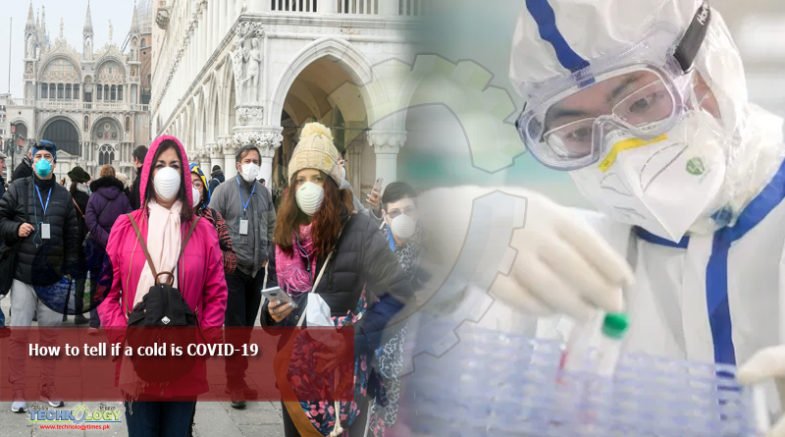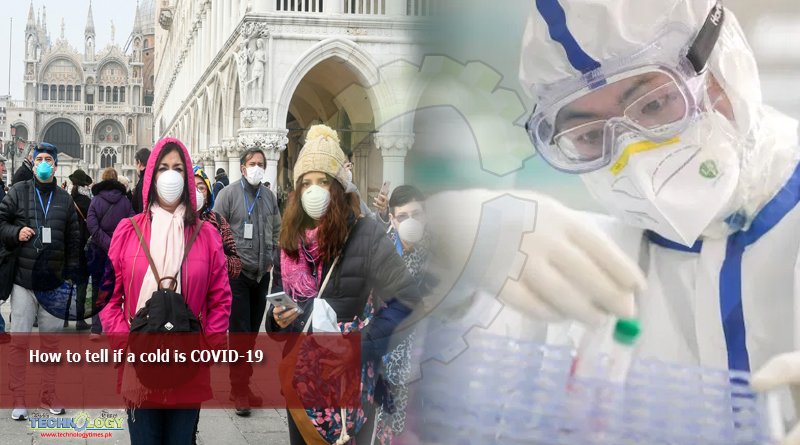The CDC calling the spread of the novel coronavirus COVID-19 across the United States “inevitable” has understandably triggered a decent amount of anxiety. While COVID-19—which is thought to have originated in Wuhan.

China back in December after jumping from an as-yet-unconfirmed animal host—has a troubling fatality rate of around 2 percent (based on current estimates), the vast majority of people who contract the virus experience only mild, cold-like symptoms. In fact, it’s quite possible that the disease’s fatality rate is artificially inflated; with so many confirmed cases featuring mild symptoms, it’s likely that there are many COVID-19 cases going totally unnoticed.
If you get COVID-19, you’re unlikely to get seriously sick and even less likely to die, especially if you are otherwise healthy. But that raises a troubling question that’s difficult to answer: How do you know if your seasonal sniffles might actually be COVID-19? Here’s a handy guide.
What symptoms does COVID-19 have?
First things first: What symptoms should you look out for?
The main symptoms of COVID-19 are fever, cough, and shortness of breath.ADVERTISEMENT / ADVERTISE WITH US
If I have the symptoms of COVID-19, what should I do?
If you have symptoms of COVID-19 but are not feeling horribly ill, you probably have a cold or the flu. Do not panic. If you have no reason to think you’ve been in close contact with someone who is infected with COVID-19, you should proceed as if you have a cold or the flu. You are unlikely to actually have COVID-19 and, if you do, you are unlikely to get particularly sick. That being said, it’s more important than ever that people who have the means to do so stay home when they’re not feeling well.
“Although the focus right now is on COVID-19, seasonal flu remains much more common,” says Preeti Malani, the Chief Health Officer and a Professor of Medicine in the Division of Infectious Diseases at the University of Michigan. “In general, all of us should make an effort to stay home and rest while ill. Everyday respiratory viruses spread easily. Wash your hands, cover your cough. If you haven’t done so, it’s not too late to get a flu shot.”
On the off chance you do have COVID-19, you should be less concerned about the risk of serious symptoms—which, if you’re an otherwise healthy individual, are unlikely to emerge—than you should be about transmitting it to more people.ADVERTISEMENT / ADVERTISE WITH US
“Especially if there are known cases in your community, it would be wise not to go in public if one feels ill,” says Stanley Perlman, a professor in the departments of Microbiology and Immunology and Pediatrics at the University of Iowa. He notes that this is especially true if you have a fever.
“If you have the sniffles and must go out, CDC recommendations are to wear a mask to avoid transmitting the illness to others,” says Charles Chiu, an infectious disease expert from UC San Francisco. Face masks are not recommended for healthy individuals, and sick people wearing them to avoid spreading germs should opt for disposable paper masks instead of cloth ones.
When should I talk to a doctor about COVID-19?
You should always seek medical care if you start to have severe shortness of breath or chest pain, or a cough that keeps getting worse, as you may need medical attention even if you don’t have COVID-19.
If you’ve traveled to a high-risk country in the last couple of weeks or have come into close contact with someone now confirmed to have COVID-19, you should implement a self-imposed quarantine even if you have no symptoms. The CDC has instructions on how to minimize the risk to other members of your household if you are keeping yourself in isolation at home.
If you have symptoms of a cold and have traveled to China, South Korea, Japan, or Italy within the last couple of weeks, you should call your doctor or a hospital and ask how to proceed. You should not go to a doctor’s office or emergency room without calling ahead, as this risks exposing vulnerable people while you sit in the waiting room and interact with doctors and nurses.
